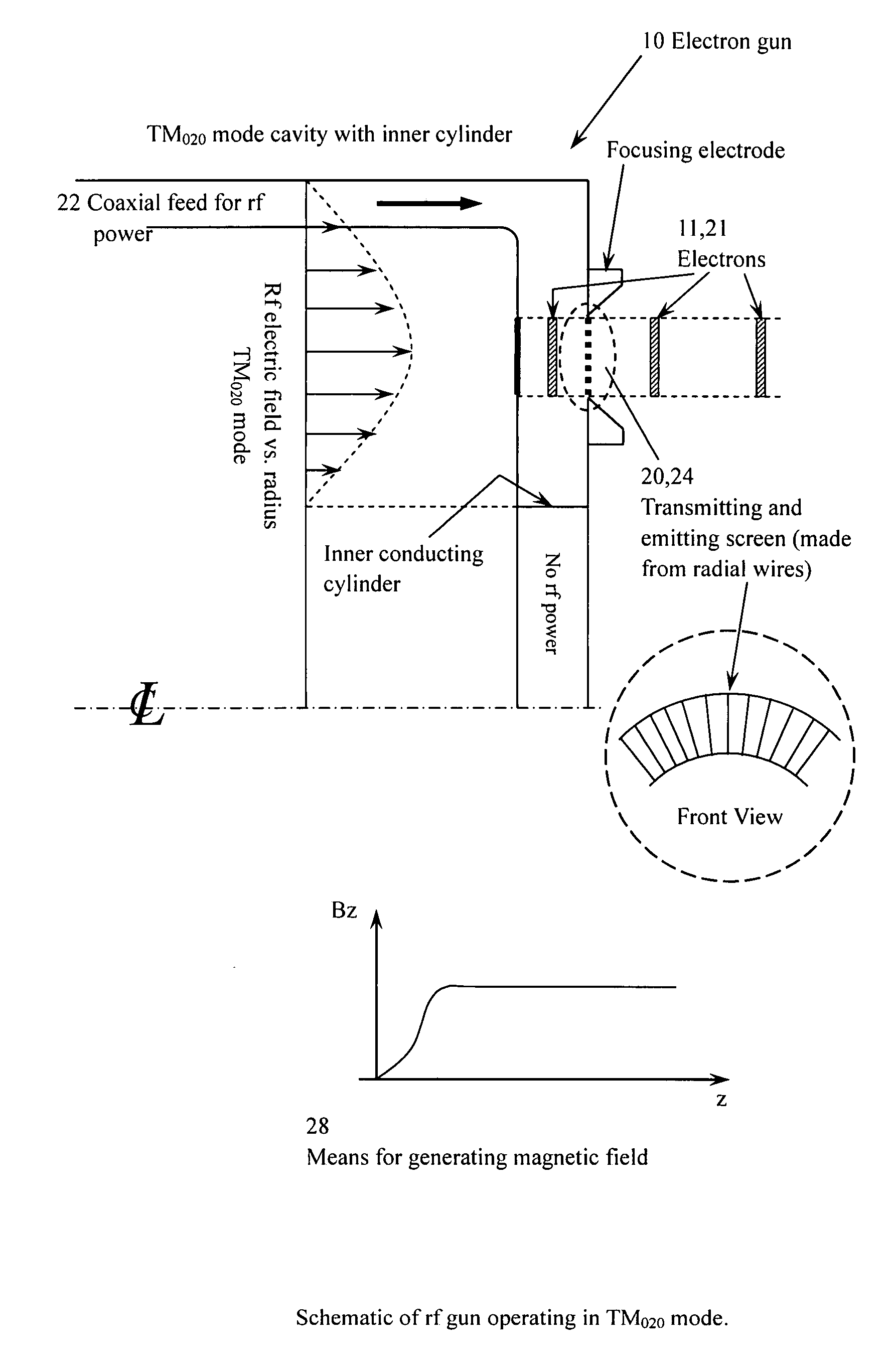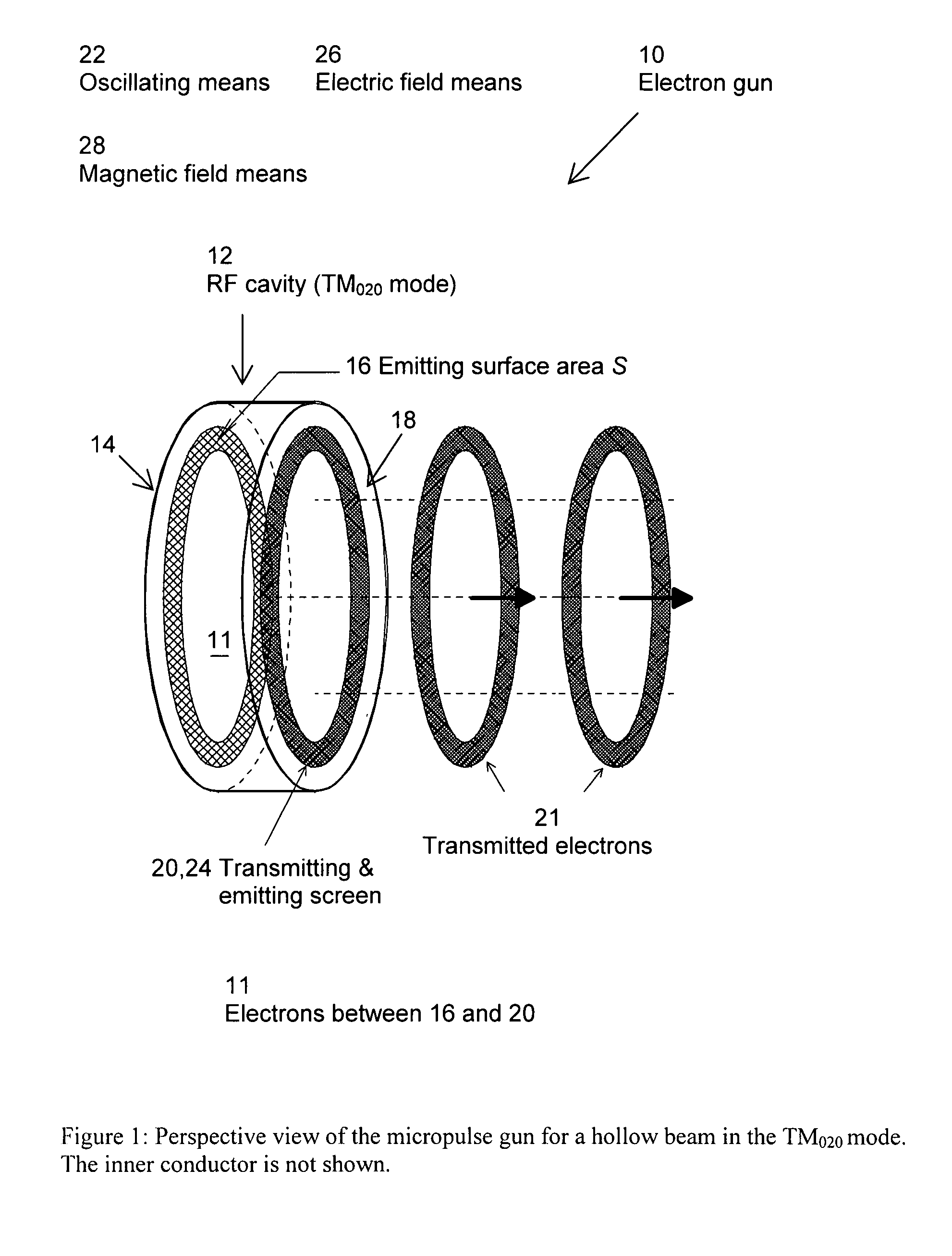Electron gun for producing incident and secondary electrons
a technology of incident and secondary electrons and electron guns, applied in the field of electron guns, can solve the problems of short-duration pulse development of high-current, electron-generating pulses, and other problems
- Summary
- Abstract
- Description
- Claims
- Application Information
AI Technical Summary
Benefits of technology
Problems solved by technology
Method used
Image
Examples
Embodiment Construction
[0059]Referring now to the drawings wherein like reference numerals refer to similar or identical parts throughout the several views, and more specifically to FIG. 1 thereof, there is shown an electron gun 10. The electron gun 10 comprises an RF cavity 12 having a first side 14 with an emitting surface 16 and a second side 18 with a transmitting and emitting section 20. The gun 10 is also comprised of a mechanism 22 for producing an oscillating force which encompasses the emitting surface 16 and the section 20 so electrons 11 are directed between the emitting surface 16 and the section 20 to contact the emitting surface 16 and generate additional electrons 11 and to contact the section 20 to generate additional electrons 11 or escape the cavity 12 through the section 20 giving the transmitted electrons 21.
[0060]The section 20 preferably isolates the cavity 12 from external forces outside and adjacent the cavity 12. The section 20 preferably includes a transmitting and emitting scree...
PUM
 Login to View More
Login to View More Abstract
Description
Claims
Application Information
 Login to View More
Login to View More - R&D
- Intellectual Property
- Life Sciences
- Materials
- Tech Scout
- Unparalleled Data Quality
- Higher Quality Content
- 60% Fewer Hallucinations
Browse by: Latest US Patents, China's latest patents, Technical Efficacy Thesaurus, Application Domain, Technology Topic, Popular Technical Reports.
© 2025 PatSnap. All rights reserved.Legal|Privacy policy|Modern Slavery Act Transparency Statement|Sitemap|About US| Contact US: help@patsnap.com



